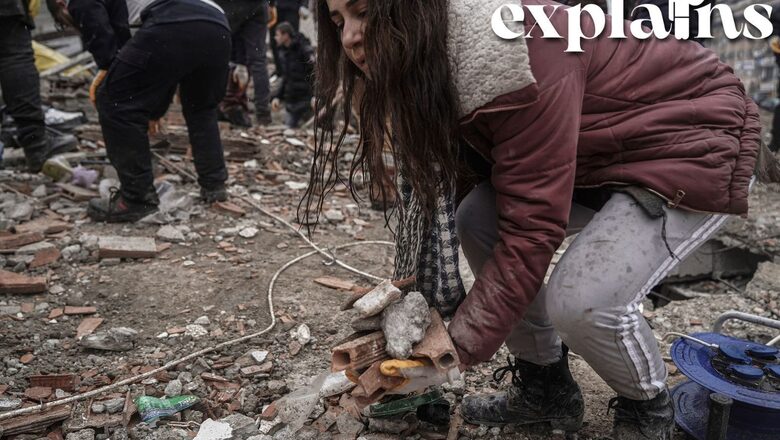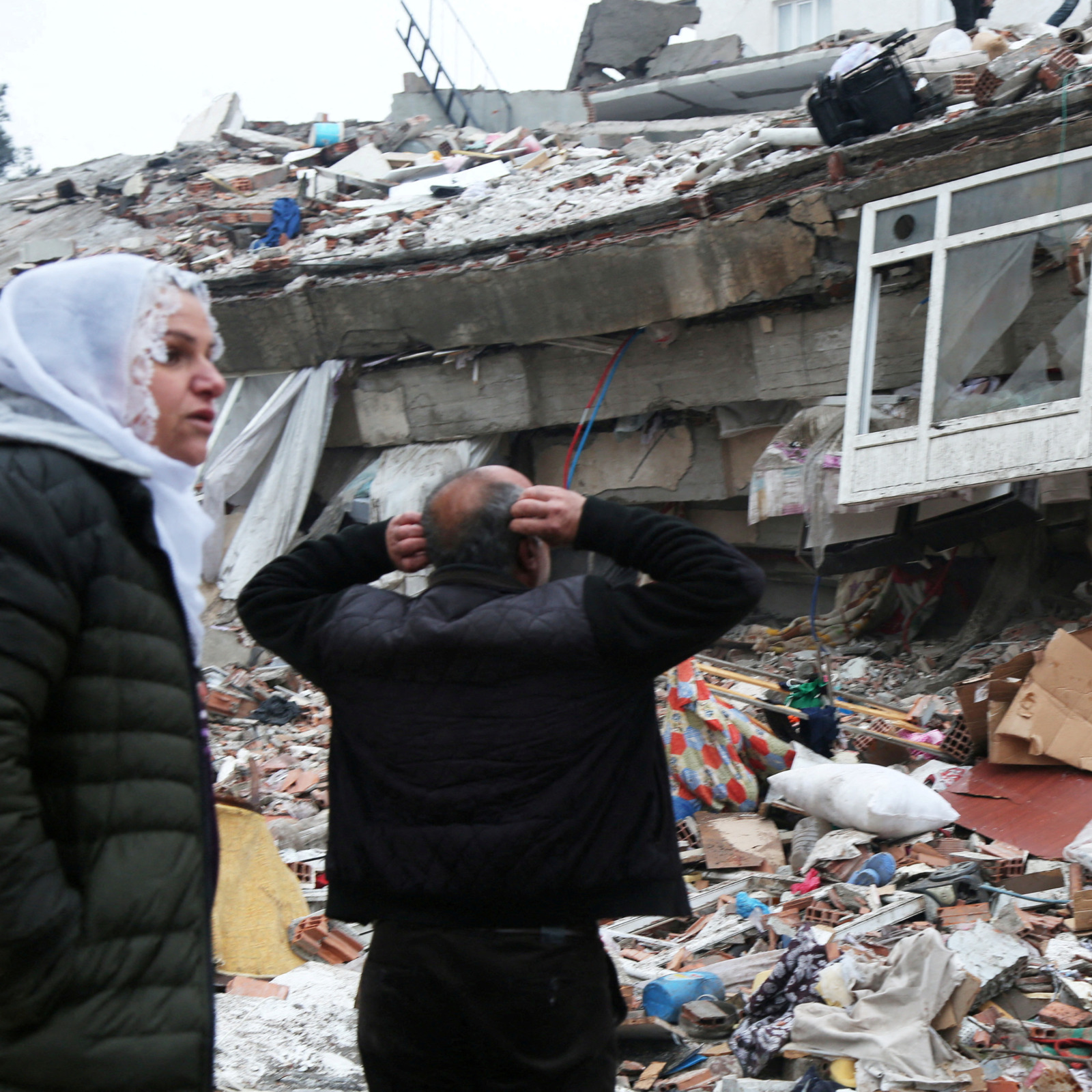
views
Rescuers in Turkey and war-ravaged Syria searched through the frigid night into Tuesday, hoping to pull more survivors from the rubble after a 7.8 magnitude earthquake killed more than 4,000 people and toppled thousands of buildings across a wide region, the Associated Press reported. LIVE Updates
Authorities feared the death toll from Monday’s pre-dawn earthquake and aftershocks would keep climbing as rescuers looked for survivors among tangles of metal and concrete spread across the region beset by Syria’s 12-year civil war and refugee crisis.
Survivors cried out for help from within mountains of debris as first responders contended with rain and snow. Seismic activity continued to rattle the region, including another jolt nearly as powerful as the initial quake. Workers carefully pulled away slabs of concrete and reached for bodies as desperate families waited for news of loved ones.

“My grandson is 1 1/2 years old. Please help them, please. … They were on the 12th floor,” Imran Bahur wept by her destroyed apartment building in the Turkish city of Adana on Monday.
Tens of thousands who were left homeless in Turkey and Syria faced a night in the cold. In the Turkish city of Gaziantep, a provincial capital about 33 kilometers (20 miles) from the epicenter, people took refuge in shopping malls, stadiums, mosques and community centers. Turkish President Recep Tayyip Erdogan declared seven days of national mourning.
HOW LONG CAN SURVIVORS LAST UNDER RUBBLE?
According to experts, a week at most under the best of circumstances. How injured the trapped victim is, if they have enough air to breathe and the extremity of the weather are among the determining factors for their survival. Major rescues occur 24 hours after a disaster, and after that, the chances of survival lessen by each day. Dr Richard Moon, a Duke University expert on survival told the Associated Press that food is not a big issue, as people can survive for weeks without it. However, most can survive only a few days without water, he added.
After a South Korean departmental store collapsed in 1995 – which killed 502 people and injured 937 – survivor Choi Myong Sok was pulled out of the rubble after 10 days, a report by the New York Times states. To survive, he drank rainwater and ate a cardboard box. He even played with a child’s toy to keep up his spirits, after two of his companions trapped with him died in the initial days.

Julie Ryan, a co-ordinator with UK-based group International Rescue Corps (IRC), told BBC that the ideal situation for anyone who has been trapped, is to have any sort of oxygen supply from the outside world, and any access to water.
Temperature also plays a role – if the entrapment area is too hot, the person could lose water more quickly, thinning their hope for survival.
Trapped victims can also experience the crush syndrome, which occurs after a “crushing” injury to a skeletal muscle. When a person is trapped after a disaster, their arms, limbs and other parts of the body can be compressed by the rubble, which causes muscle swelling or neurological disturbances. The end result can be fatal – renal failure or shock, and the condition requires immediate medical assistance.
CASES OF ‘MIRACLE’ SURVIVALS
More than two months after an earthquake hit Kashmir on October 8, 2005, a 40-year-old woman Naqsha Bibi was rescued from her kitchen. Her cousin, Faiz Din, who had found her, told BBC that the family was not even looking for her, having assumed that she had either fallen down a hill, or gone to another relief camp. Weighing just 35 kg, she was found with muscle stiffness, and was so weak she could barely talk.
Traces of rotting food were found in the small space where Naqsha was trapped, and the air inside was fresh. A trickle of water on one side of the kitchen was also found, the report states.

In a similar case, after the 2010 Haiti earthquake, a man was rescued from rubble in Port-au-Prince after 27 days of being trapped, the Guardian reported. He was found malnourished, dehydrated and mentally disturbed, but had suffered no serious injuries.
Reshma Begum was the centre of another miraculous survival, after a multi-storeyed garment factory building collapsed in Dhakha, Bangladesh in 2013. The disaster killed more than 1,100 people, but Rashma was rescued – 17 days after the incident. The then teenager said she had forgotten most of what she did under the rubble. However, she recalled that she had survived by drinking rainwater and eating food from the lunch boxes of other workers.
Read all the Latest Explainers here



















Comments
0 comment